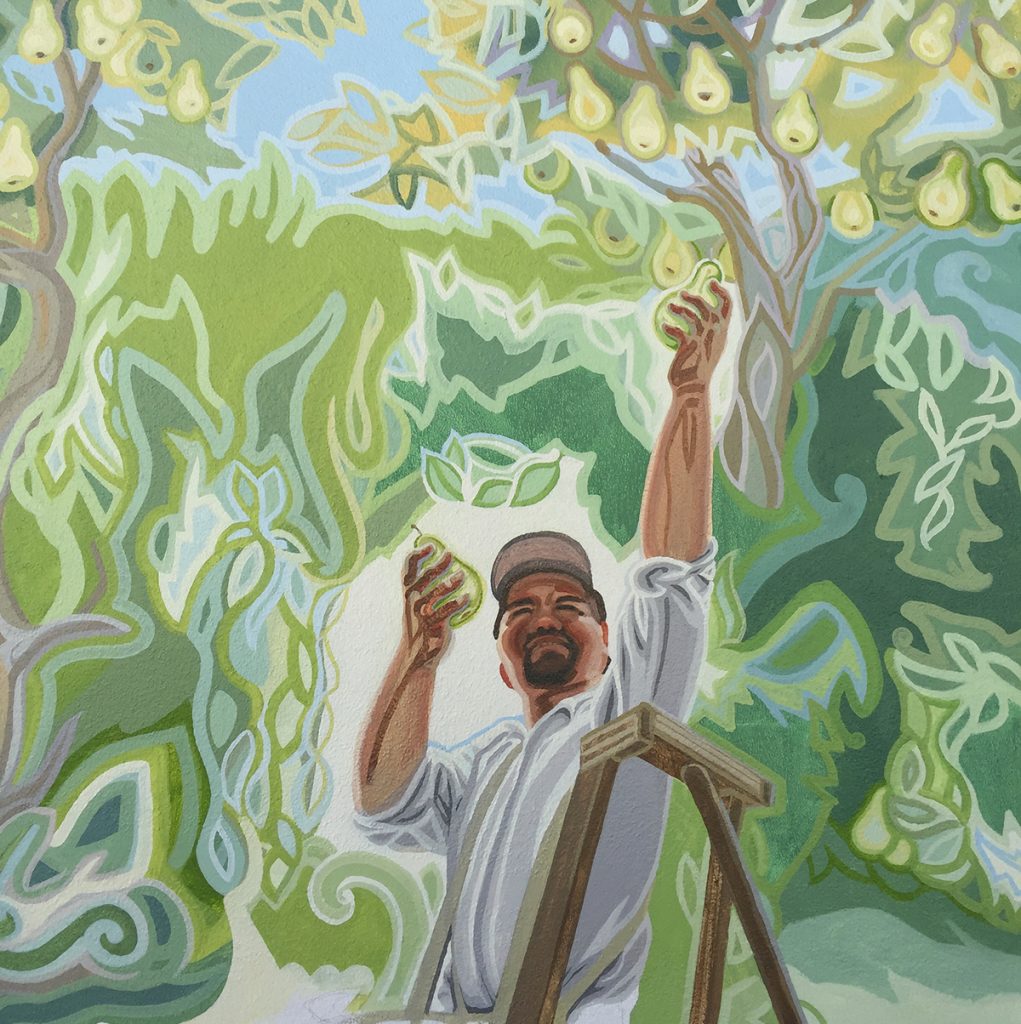
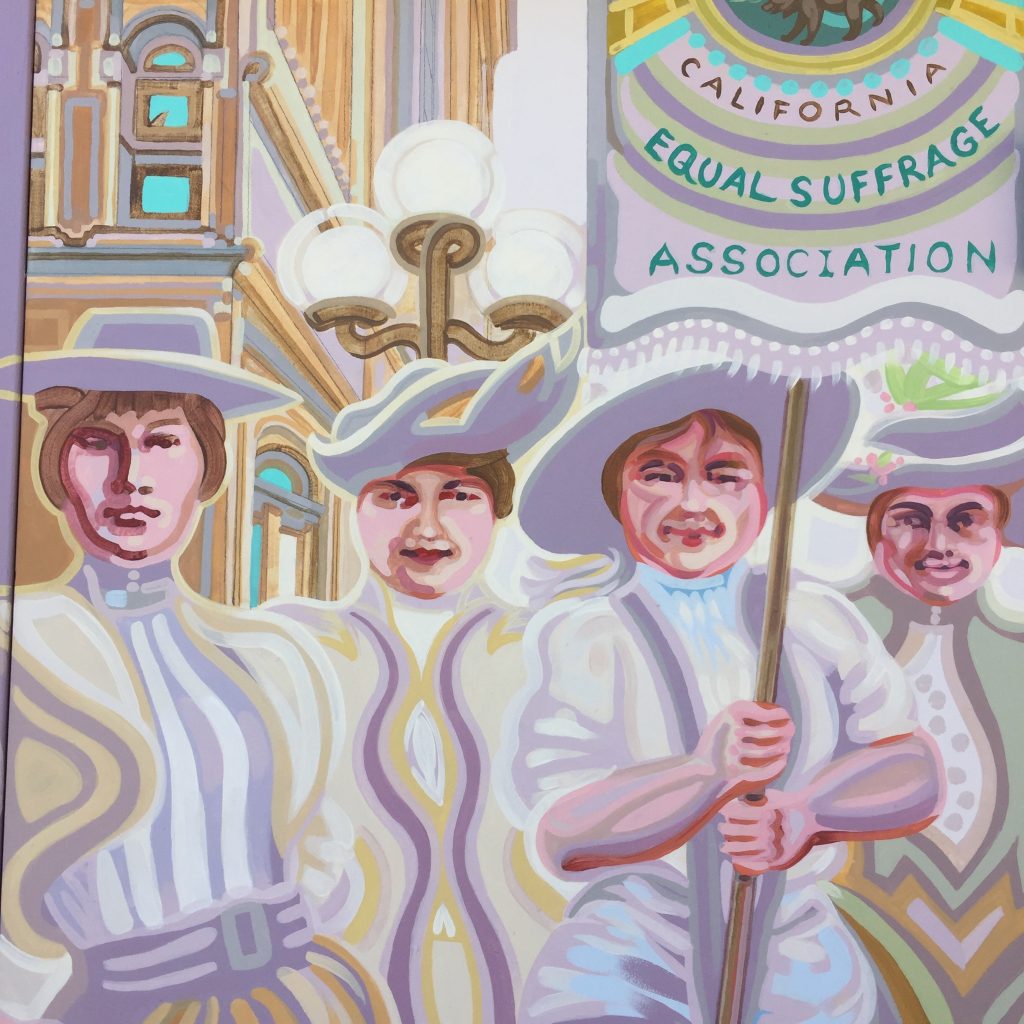
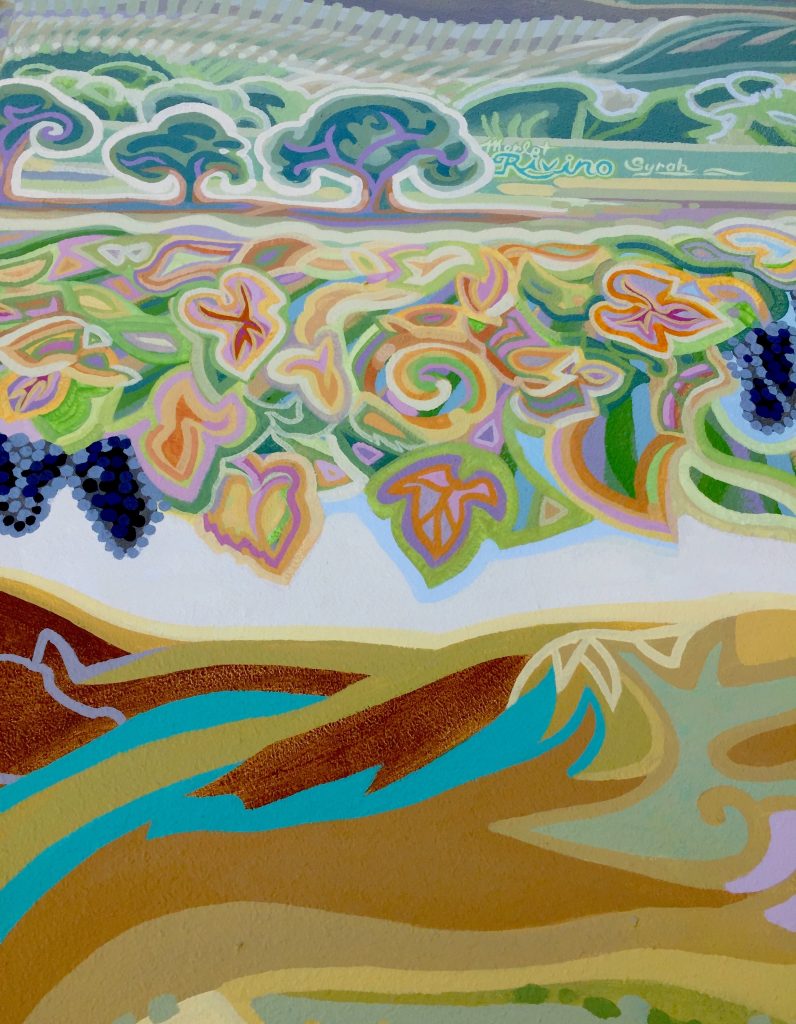
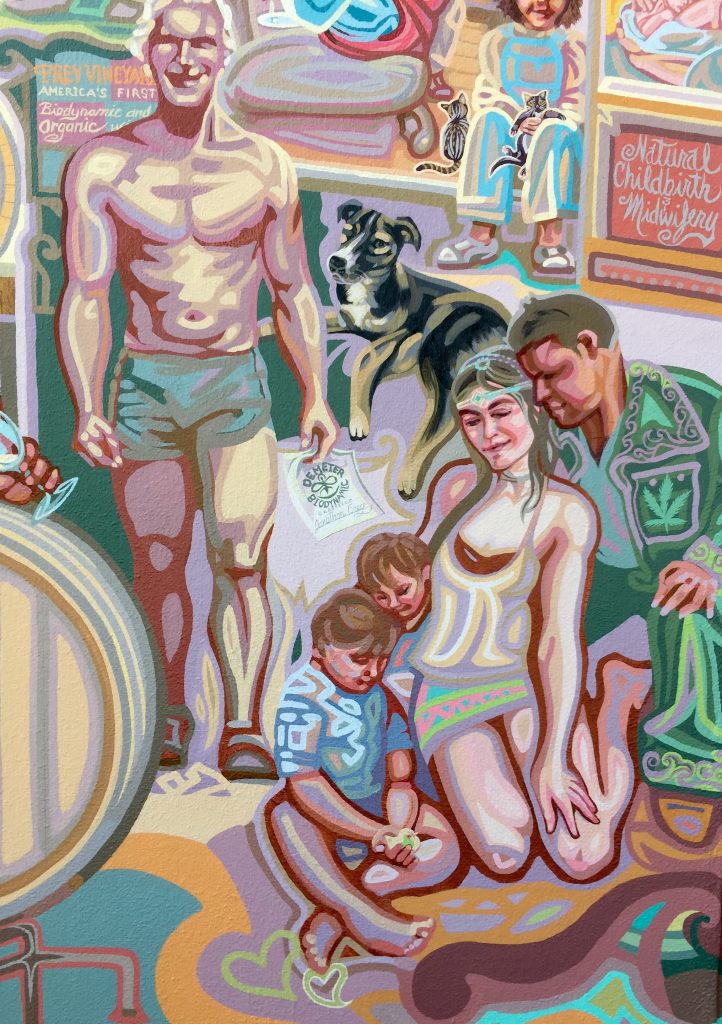
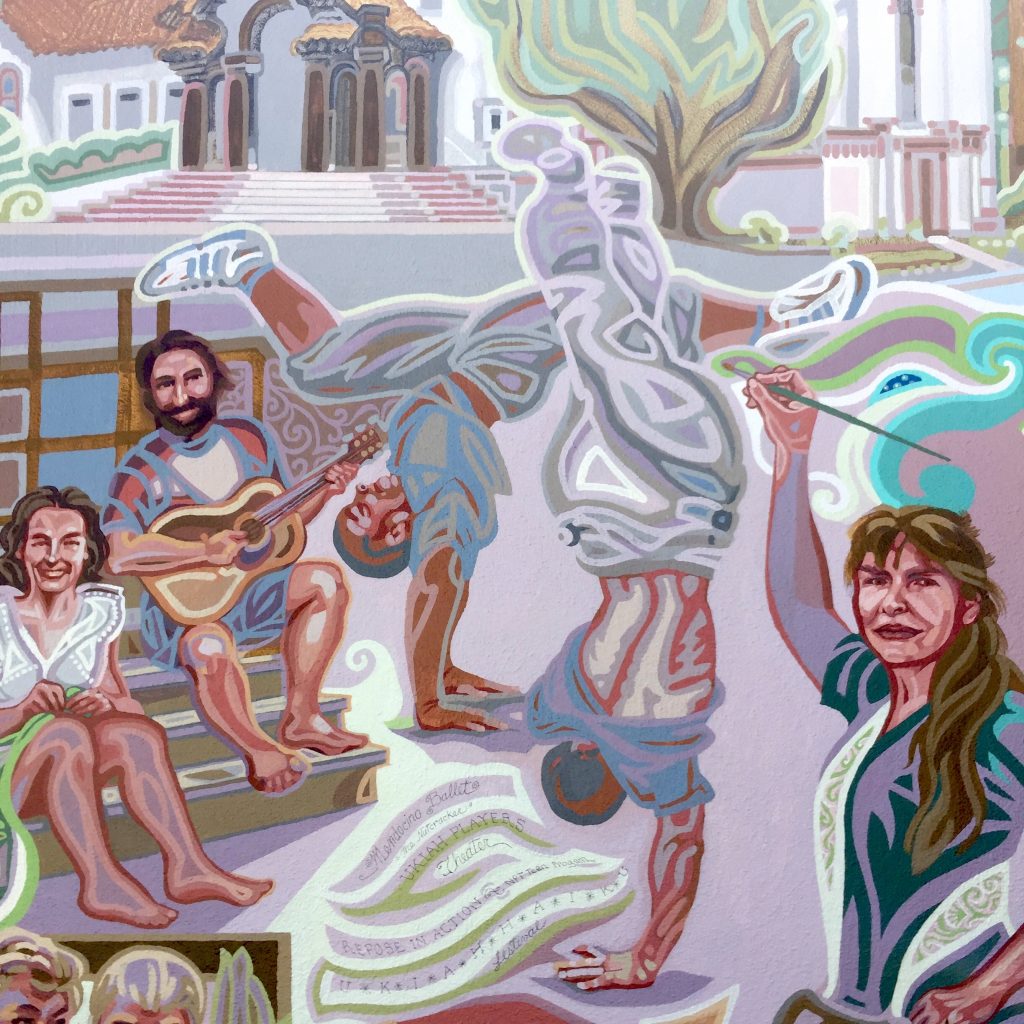
Panel summaries:
Click on the list or scroll down for the quick view.
After each summary, a PANEL BUTTON links to all the stories and portraits of real people in that panel.

panel 15 labor

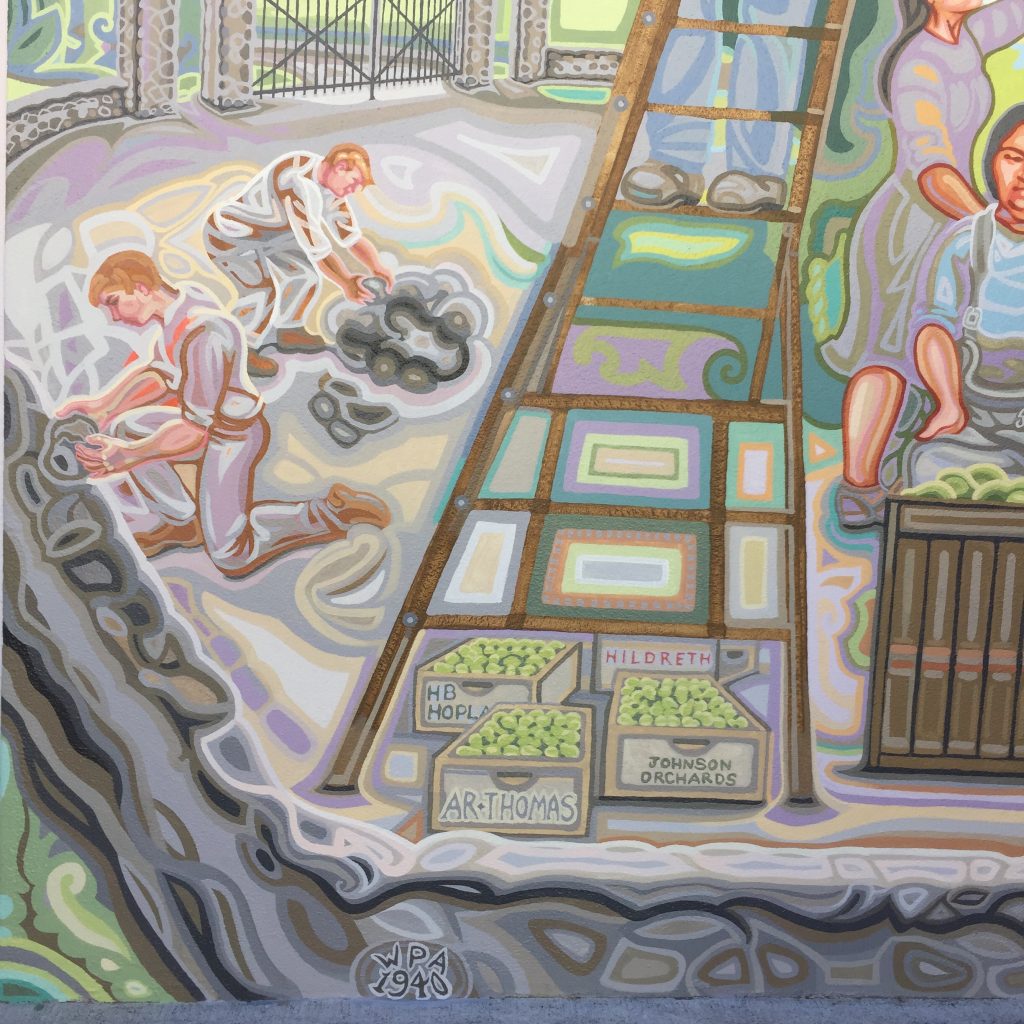

I planned the subject of this panel – labor – to be partner to that of the previous one – education. Their unity as paired pillars of society is seen when looking at the entrance that they flank.
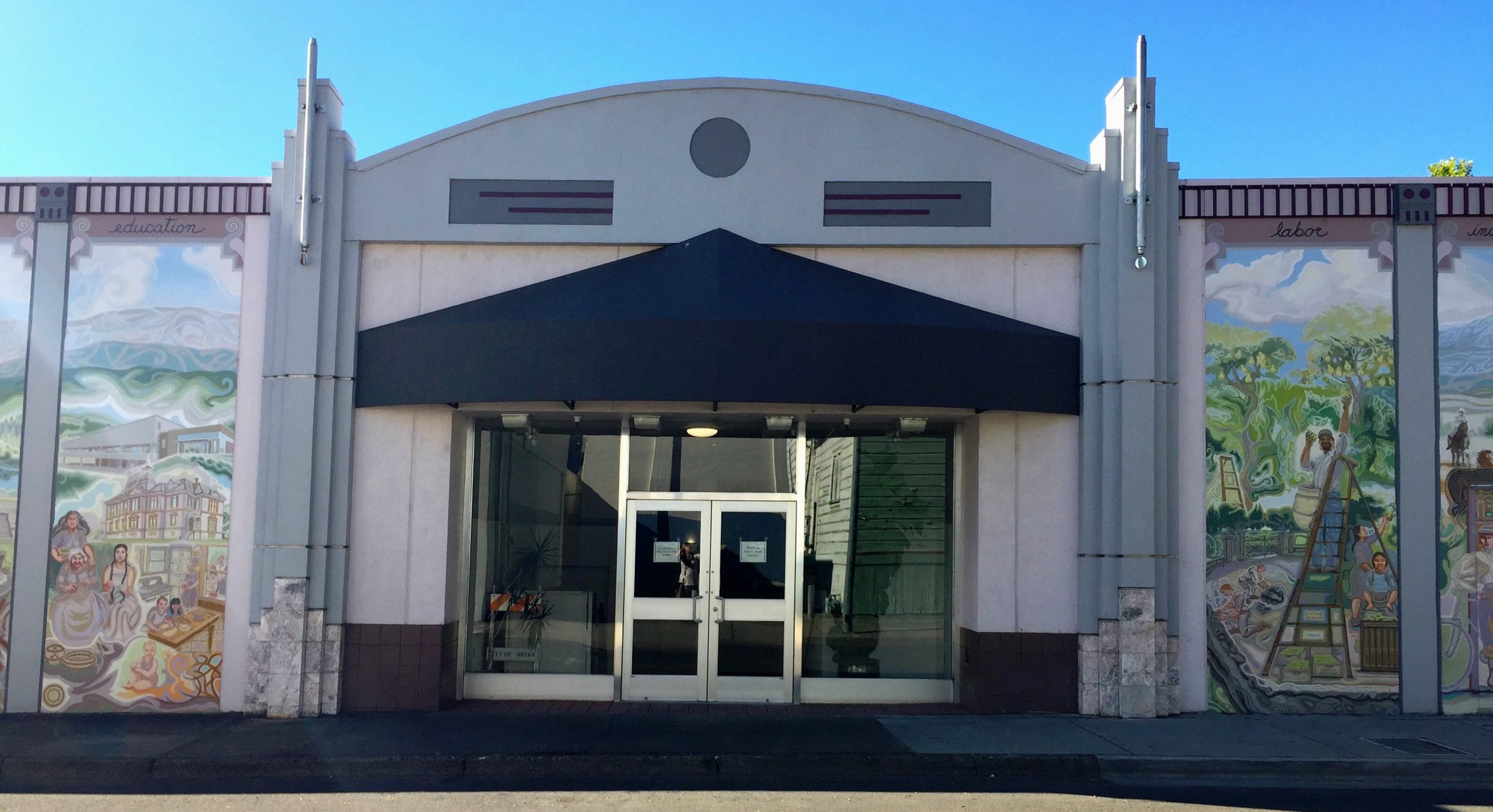
My intention with this panel is to honor labor, the work we do with our hands. Work performed by men, women, children and animals. Work performed for pay, for the household, and for the satisfaction of accomplishing something in the physical world.
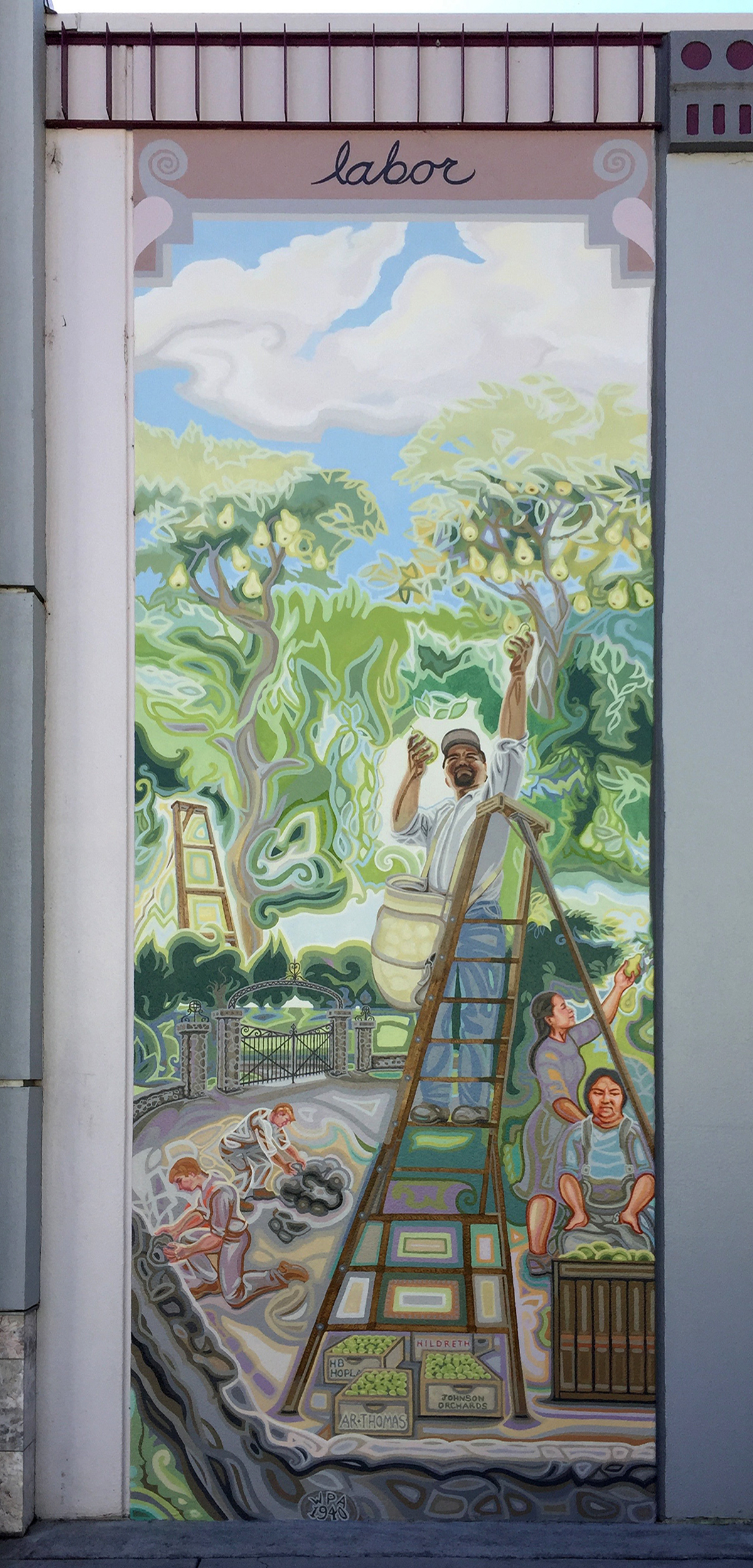
Find all the stories and portraits on its panel page:
panel 16 independence
The upper part of the panel expresses independence in terms of the ranching life. Ranching continues to be important in our region, increasingly for local consumption of meat by a community that values self- sufficiency.
Then the idea struck me to use the utility door as part of the subject: independence achieved through the vote. 2020 is the 100-year anniversary of women’s suffrage in our country and I decided to show them walking through this open door of opportunity.
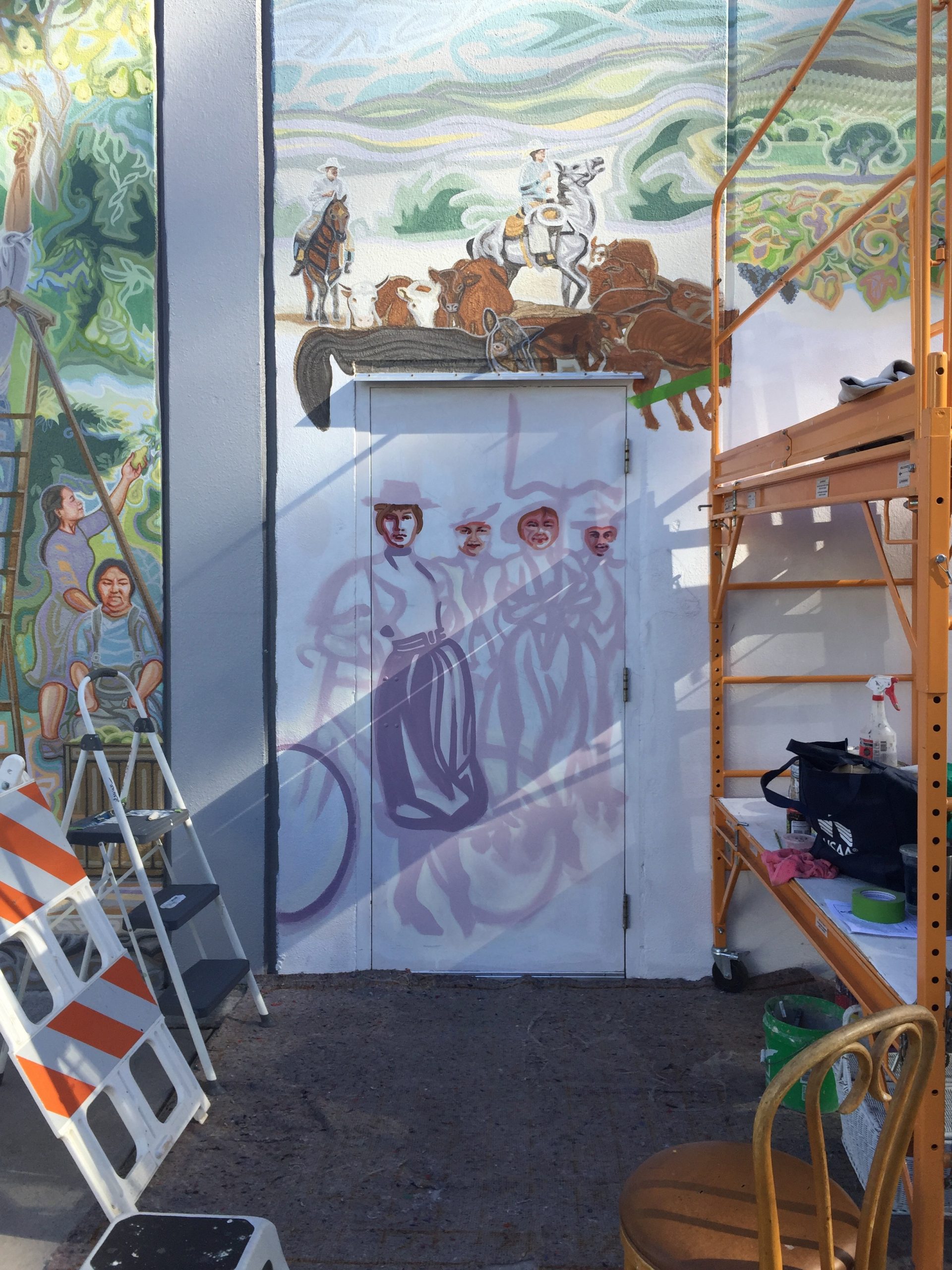
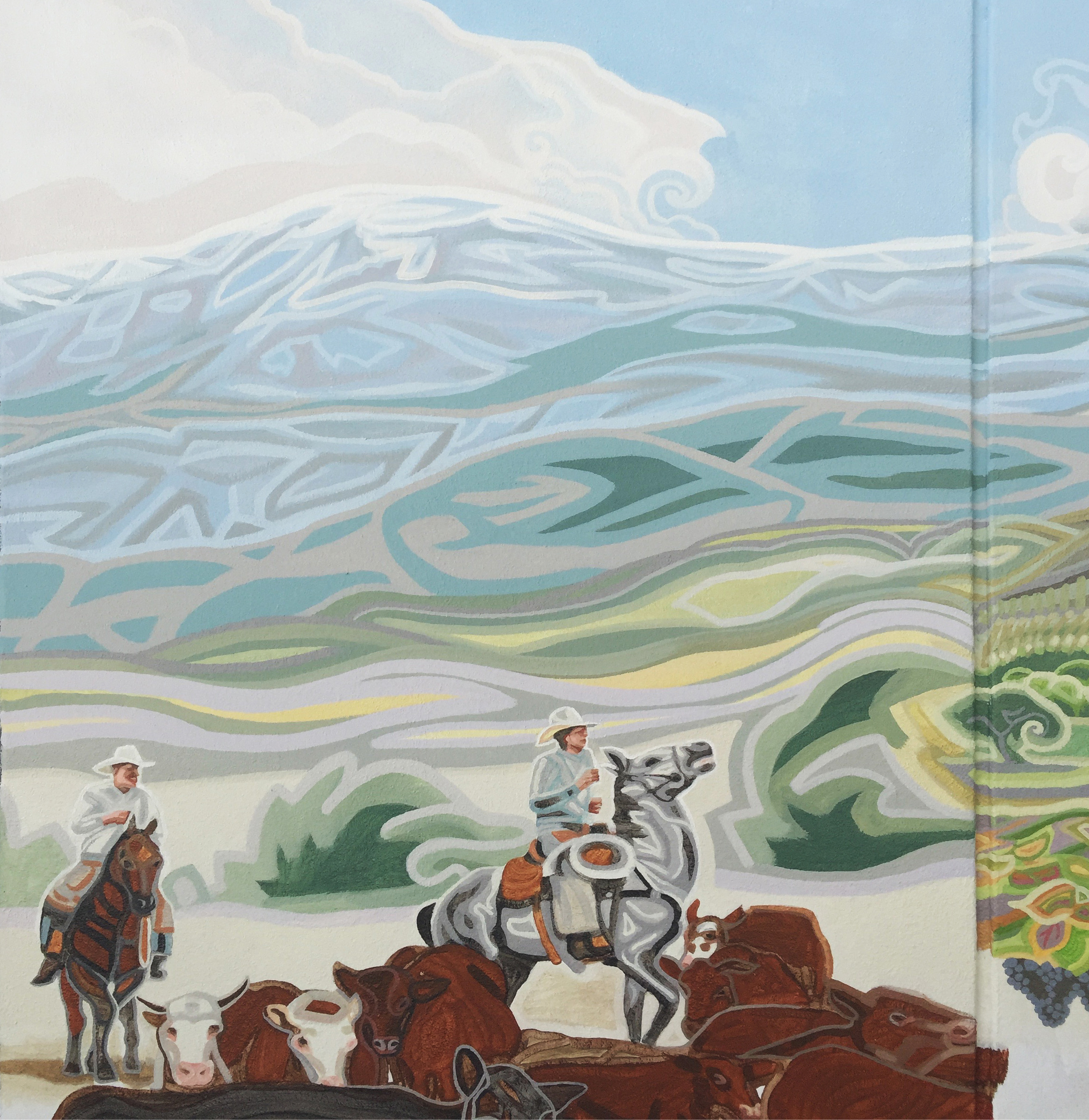
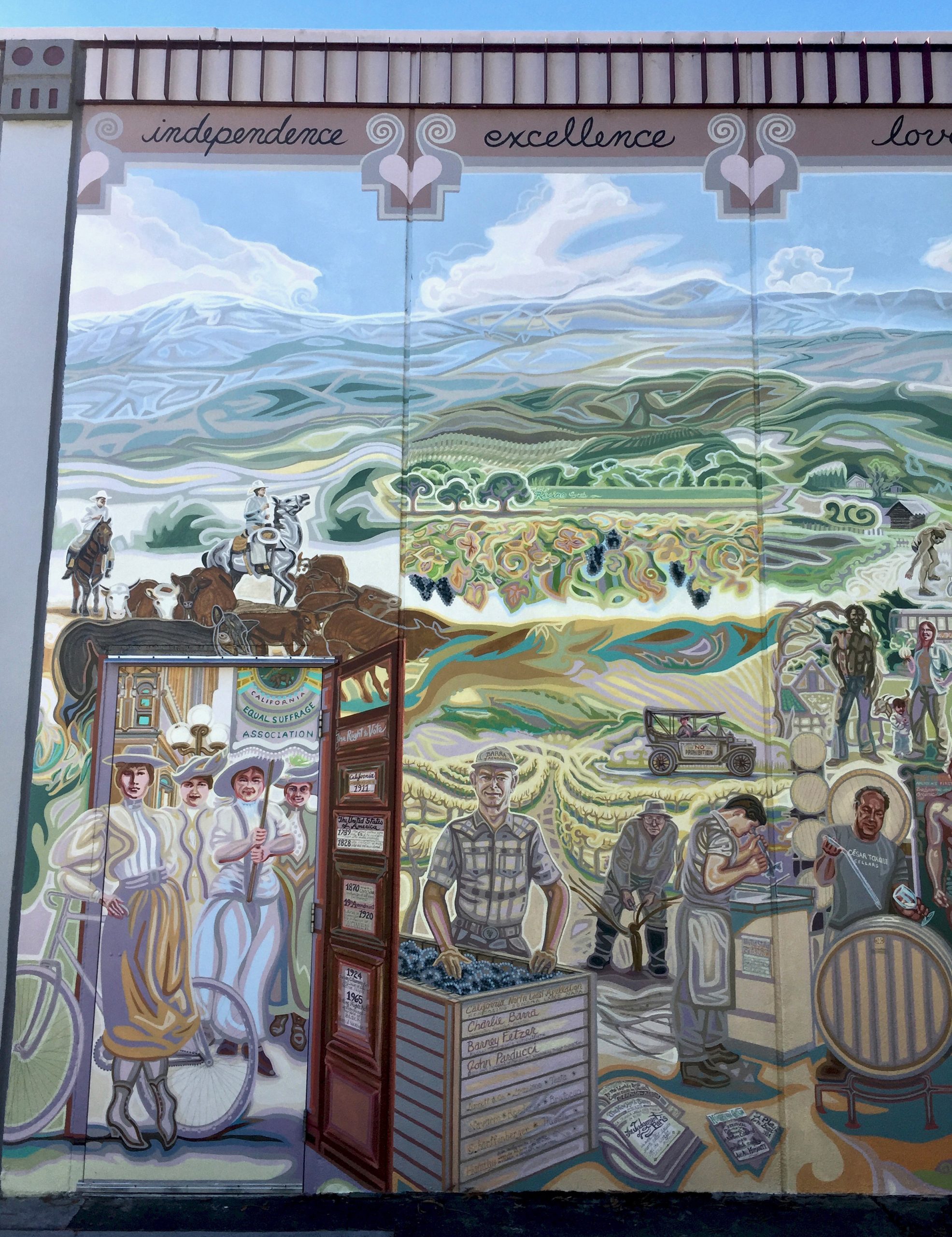
I took advantage of the painted door’s panels to write milestones in voting rights. Sometimes narrative paintings benefit from the addition of writing!

See them up close and find out why there’s a bike in this scene on the panel page.
Find all the stories on the panel page:
This section has a lot of subject spillover from one panel to the next, as you will see here.
panel 17 excellence
This panel represents wine making in our county. The words at the top of the panels relate to many parts of our history, but especially to the scenes below. Fine wine is an expression of the earth from which the vines grow and Mendocino County is one of California’s largest and most climatically diverse grape-growing regions. Notice the heightened earth tones of the panel’s background landscape.
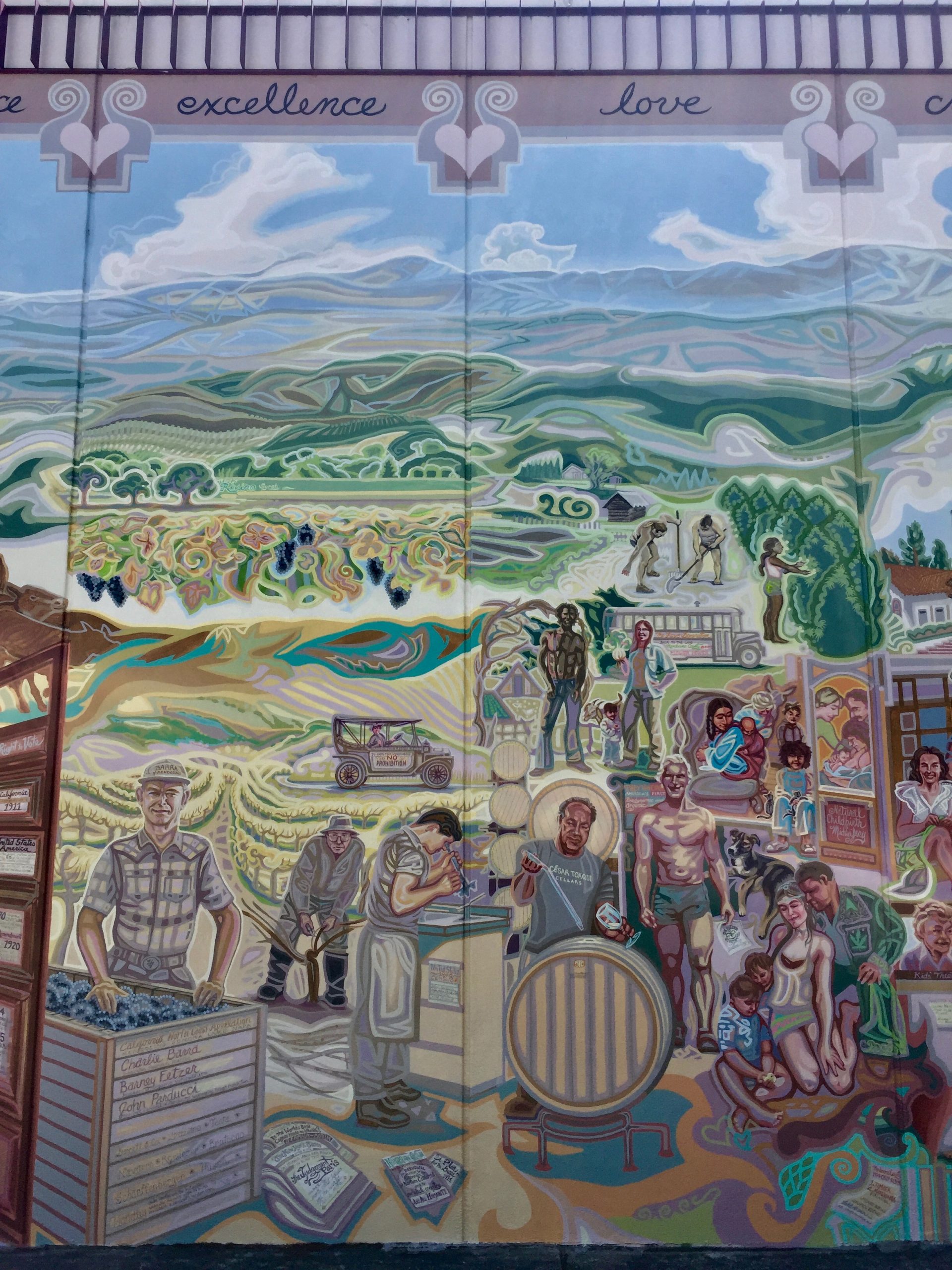
Three iconic wine pioneers are portrayed in the foreground: Charlie Barra, Barney Fetzer, and John Parducci. Notice the woman driving in her ’20s car behind them. This is Anna Morrison Reed, who was an influential suffragist, lecturer and publisher from Ukiah. She also campaigned against prohibition and in defense of the vineyards, uniting the themes of this panel and the previous one.
Find all the stories on the panel page:
panel 18 love

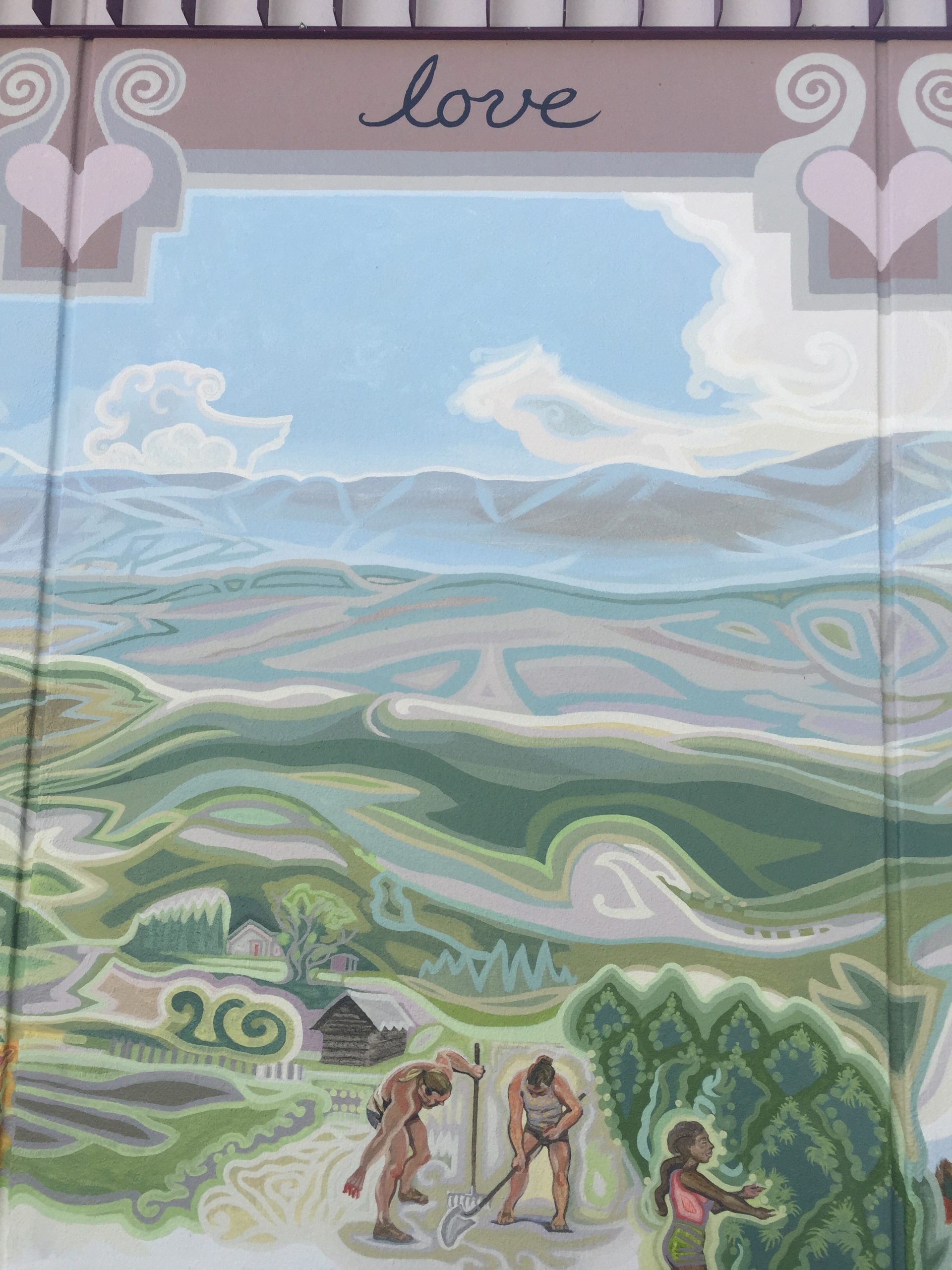
The Hippie arrival and back-to-the-land movement is the subject of this panel, surmounted by the word “love” for “the love generation” and “The Summer of Love” in 1967.
In the panel you see a communal group in their garden, preparing ground, growing vegetables and tending their thriving Indica marijuana plants.
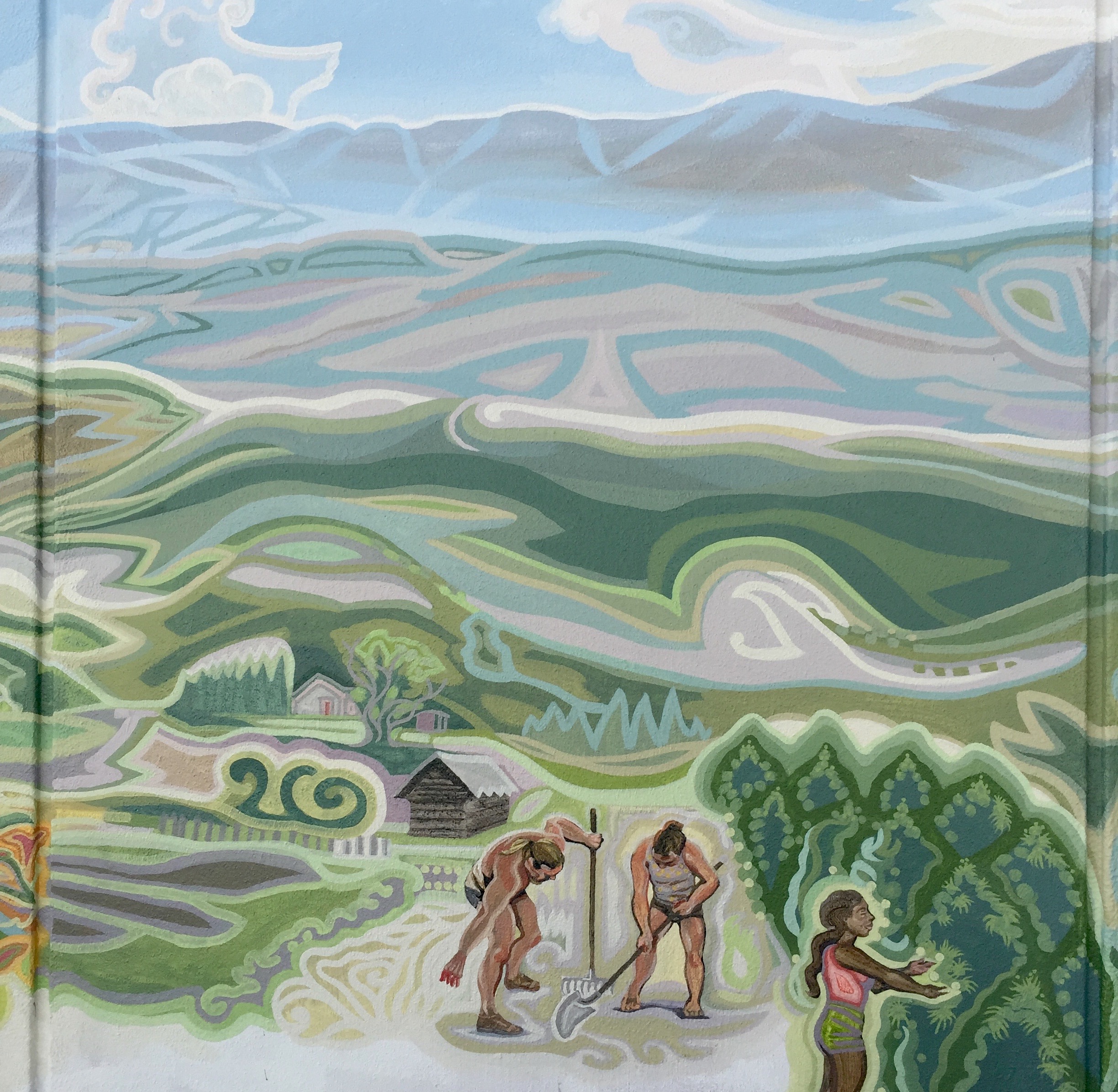
San Francisco was the epicenter of the “Summer of Love,” and during the next decade many flower children (and their actual children) moved north, including throughout Mendocino County, to live close to the earth, with an emphasis on sharing, openness and peace.

Over time, the newcomers and the established community transformed each other to produce the diverse and mostly tolerant society we now enjoy. The hippies put down roots and created an economic niche for themselves by cultivating marijuana. This underground economy had a huge boosting effect on the region.
As we enter legalization in California, there are huge hurdles to overcome, but Mendocino County has become a leader in high quality marijuana cultivation and products, including those used for medicinal purposes.
The love panel is finished contains 21 figures, most of which are portraits!
Find all of their stories on the panel page:
panel 19 creativity
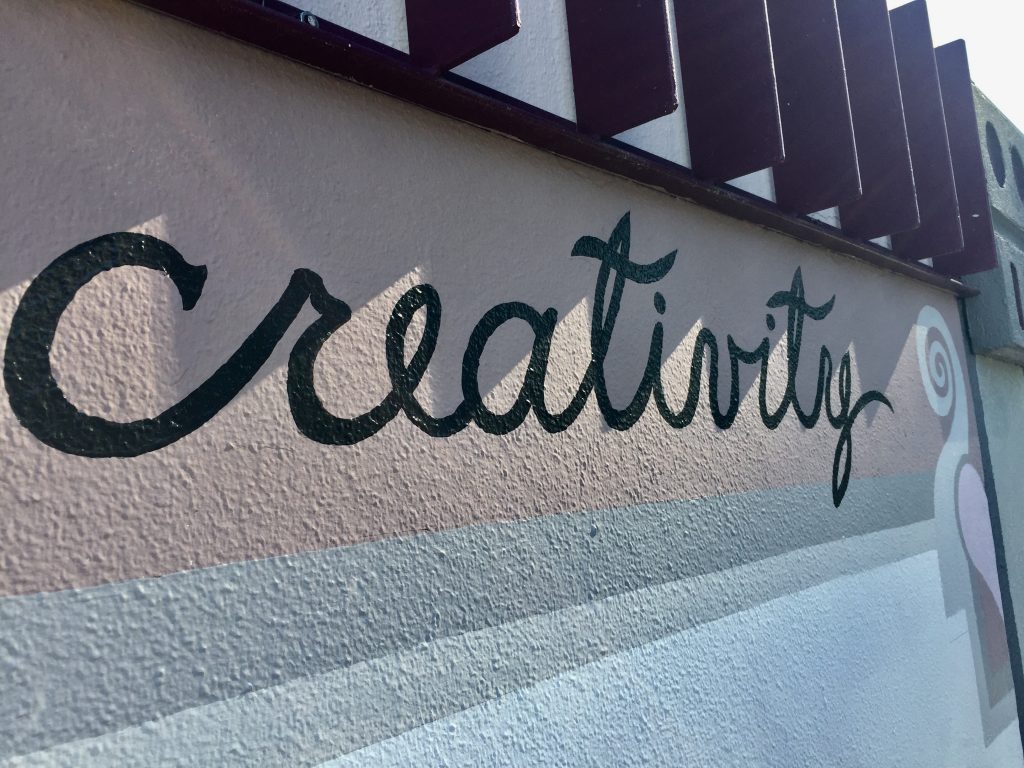
In this panel we again see the old and the new, this time embodied in the same structure: this Spanish-style edifice historically was Saint Mary of the Angels Catholic Church, and many people who saw the mural when I was working on this panel said, “Oh, we were married there!”
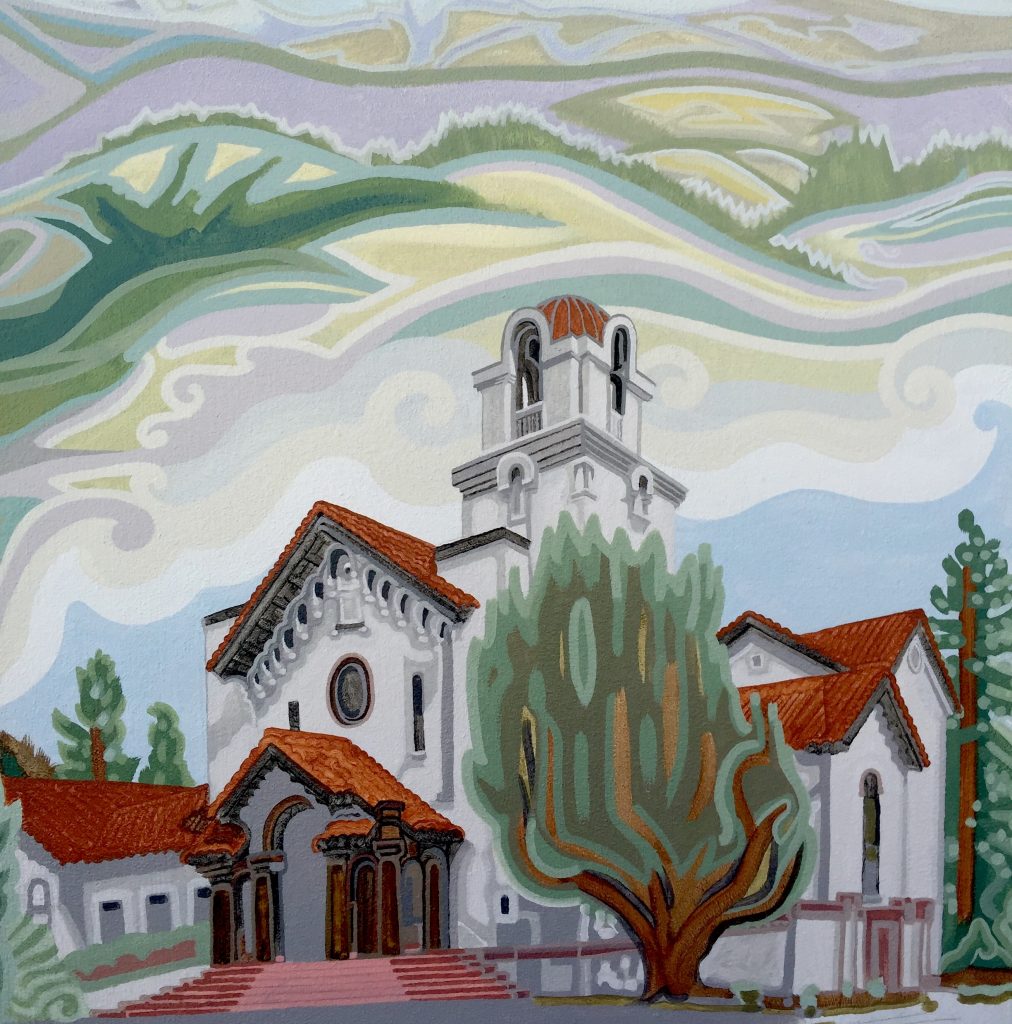
But young girls who see the panel often say, “Look Mommy, that’s where my dance class is!” because now the beautifully renovated building is home to the School of Performing Arts & Cultural Education, commonly known as SPACE Theater.
This panel represents creativity in the arts, whether visual, literary, performing, dance or theater.
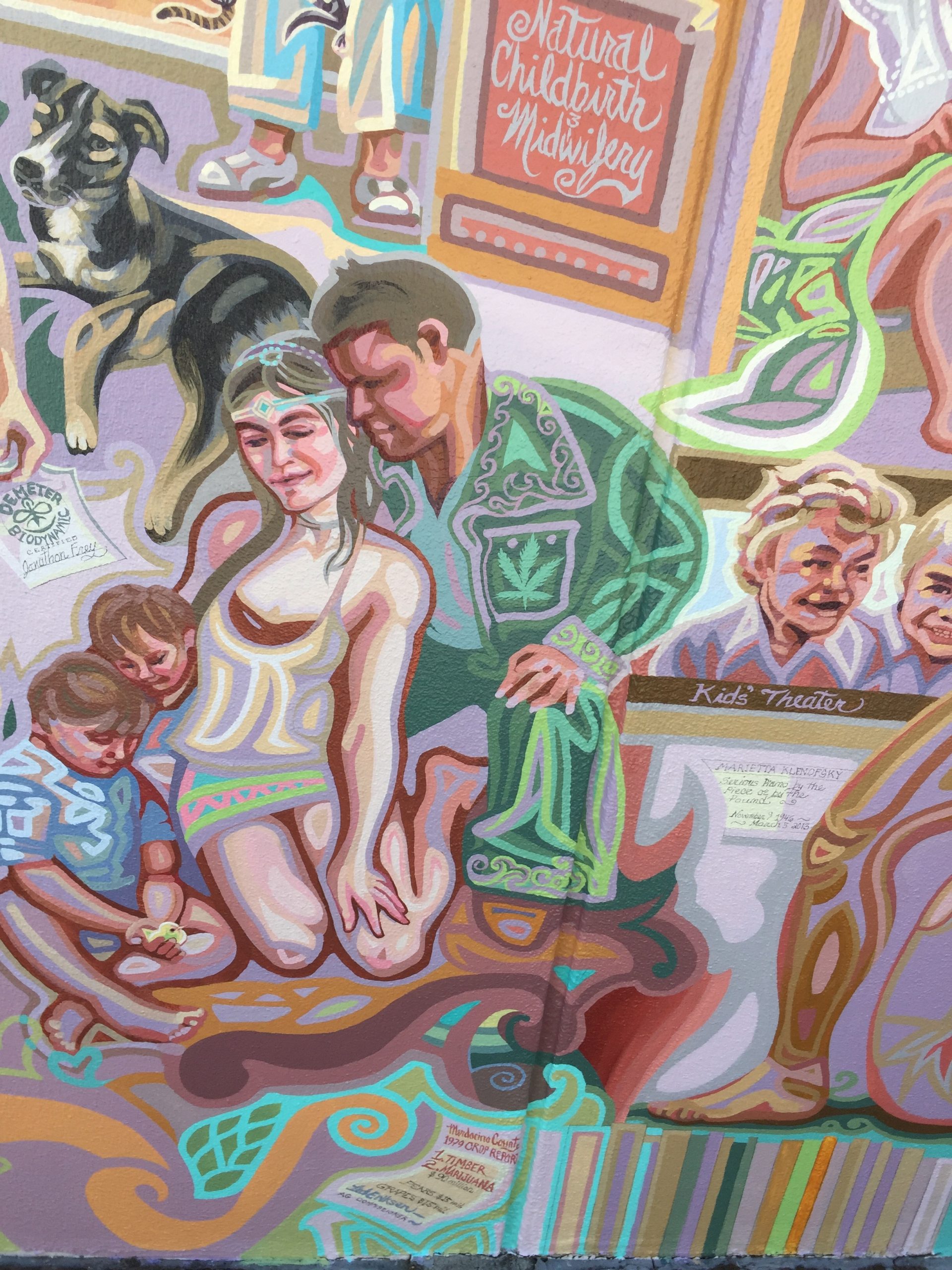
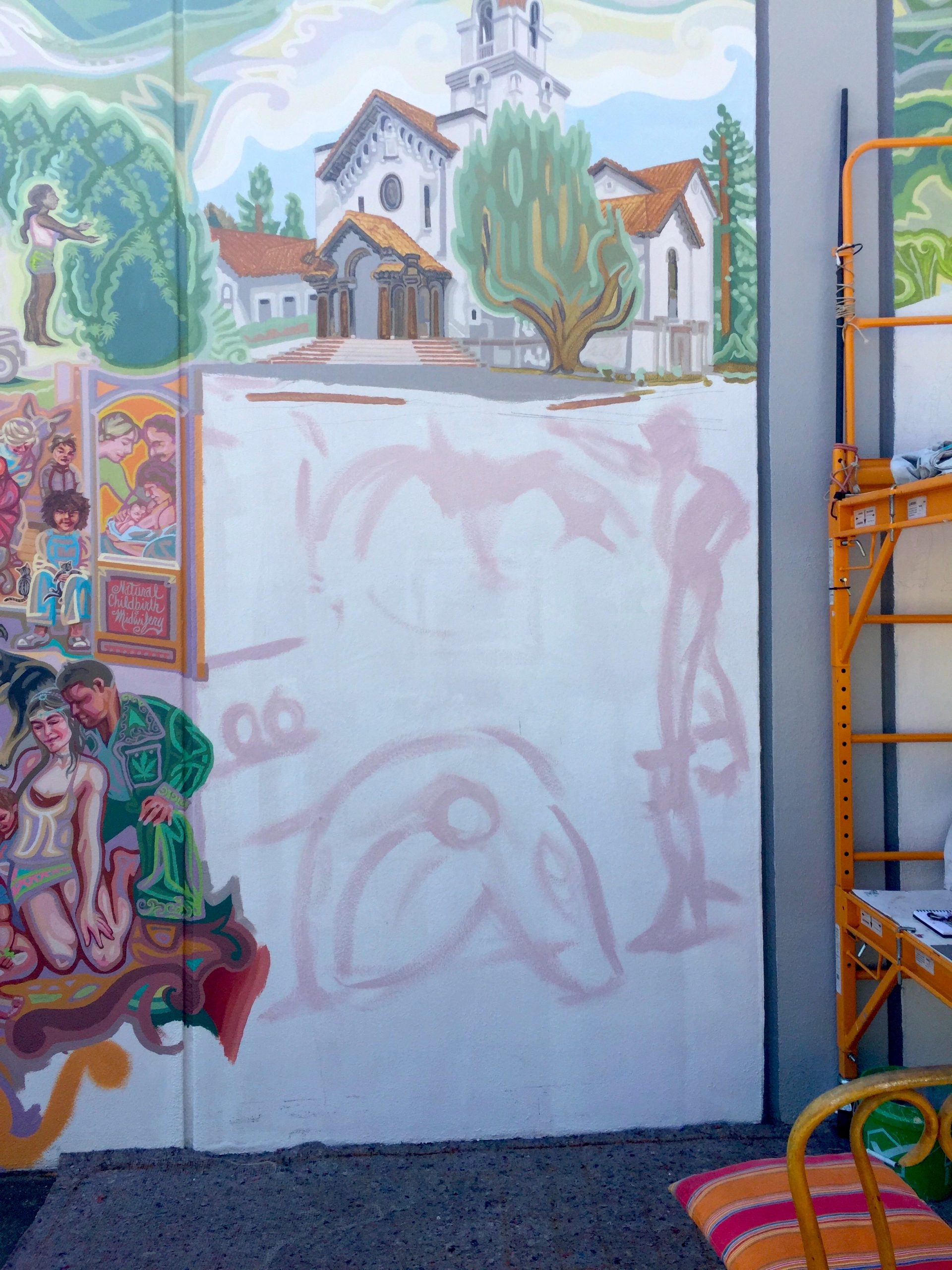
See the figures taking shape on the right. The left photo shows how the cracks between panels both divide the scenes and get crossed over. There is also a surprise portrait in the panel. Well, not so surprising. HINT: she wears cowboy boots…
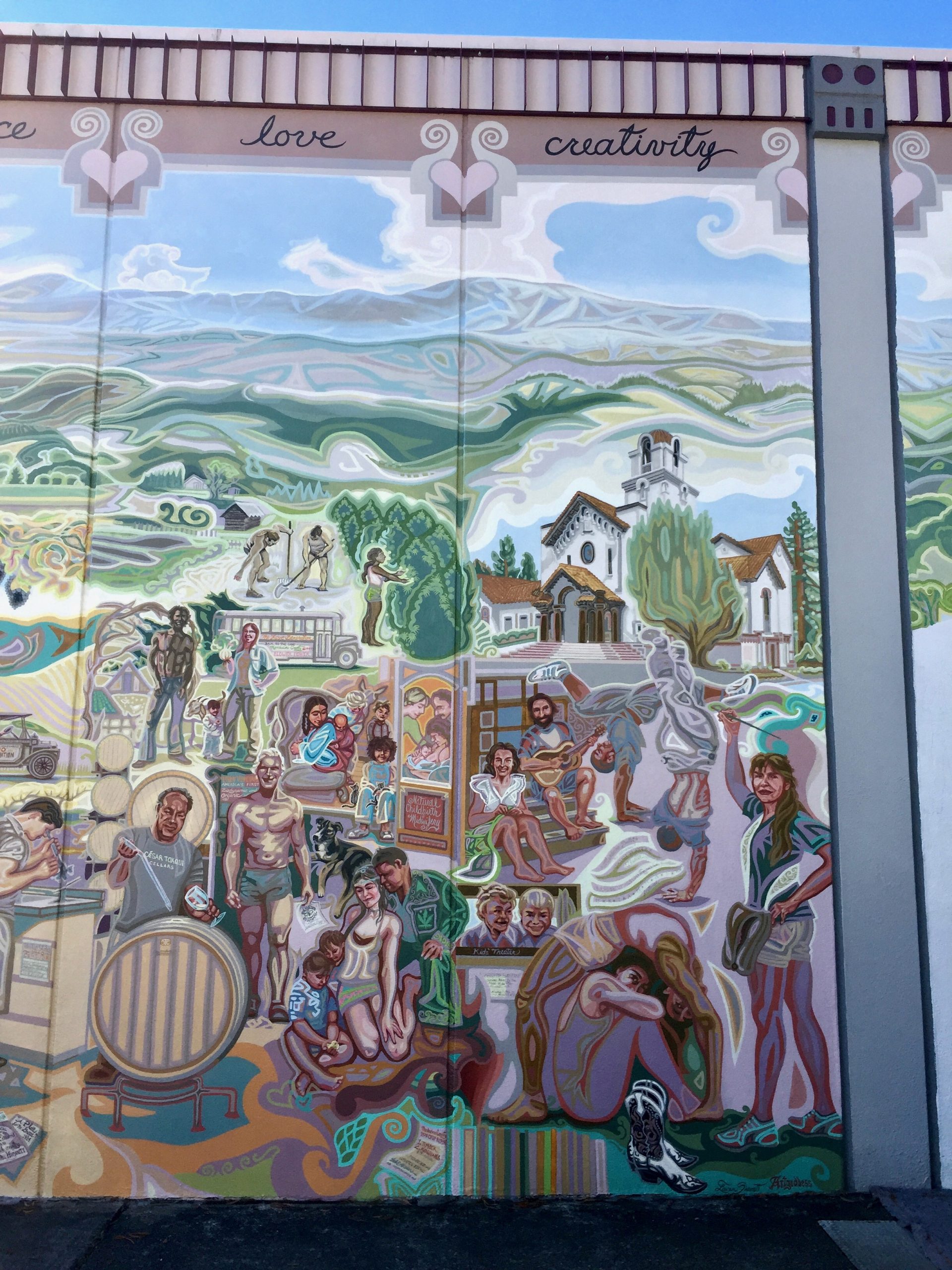
Find all the stories on the panel page:
Previous…
SECTION THREE
Up Next…
SECTION FIVE